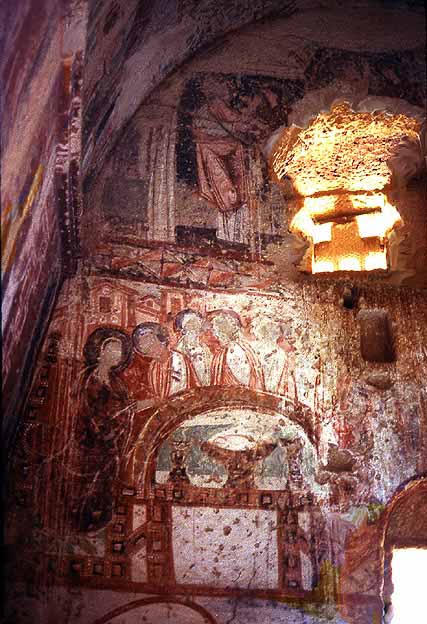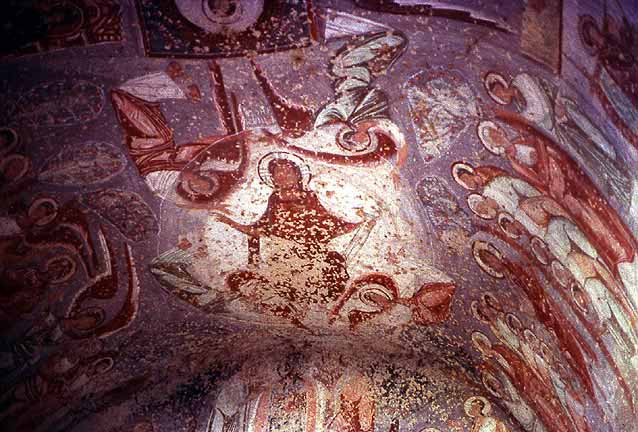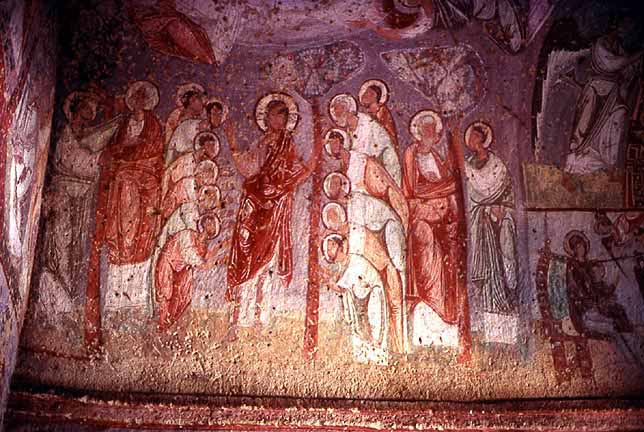Caoppadicia, Caves of Cavusin 10th cent - A History of Romanesque Architecture 300 - 1300 (sitios de interés)
Descripción del sitio
This marker is part of an illustrated Survey of Romanesque Architecture, 300 to 1300 AD. To see and read all comments you have to download the post to your hard disk.The Caves of Cavusin. 10th cent
In Çavusin lives only one family and the guardian of the church, the frescoes of which are among the most extensive and best preserved in Cappadocia. The church was dedicated in 969 by Nikephoros Phokas who also founded the Great Lavra, the oldest monastery on Athos (962). He was a very successful admiral and by the grace of the Empress for a brief time Emperor of Byzantium (963-69) — before she had him killed by his successor in her bed, the Armenian Tsimiskes (969-76).... The apogee of Byzantine history.....
Hewn from the rock the cave church is very dark and photographing difficult (absolutely no flash!). The only reason to preserve the frescoes of the 10th to 12th century is for the tourist. Neither the locals nor the government has much interest in these Christian paintings. - A Last Supper above the entrance door - much like in Khintsvisi in Georgia.

In the vault Christ is being elevated by four angels. The close relationship between Georgian and Cappadocia frescoes is noticeable everywhere.

Christ flanked by the twelve apostles and two other saints attended by angels in a, for me unidentifiable, scene.

Photos by RWFG